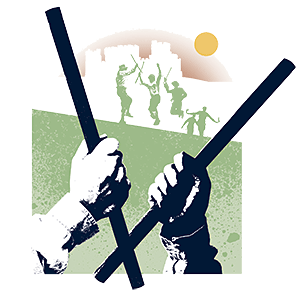The battle for Britain’s heritage

Roula Khalaf, Editor of the FT, selects her favourite stories in this weekly newsletter.
As the annual summer tourist invasion gets under way in Scotland this month, wannabe Bravehearts have a new place to go. In March, a state-of-the-art history centre opened at the spot where the Battle of Bannockburn took place 700 years ago between Scottish and English troops.
The project claims to be the first in the world to use sophisticated motion sensors to teach history (visitors are beset by electronic whizzing arrows to get that authentic 1314 experience). As such, it is something of a triumph for the Scottish government and Heritage Lottery Fund, which invested £5m and £4.1m respectively. “It takes the visitor experience to a new level using cutting-edge technology,” enthuses Colin McLean, head of the Heritage Lottery Fund Scotland, who hopes this will enable Bannockburn to be “a significant international tourist destination and a valuable education resource”.
But, in reality, Bannockburn is providing another type of lesson too. Those running the heritage site insist they built it as a “neutral” educational centre, to be “historical”. But history is never neutral – least of all when Scotland is about to vote on independence. And so, unsurprisingly, the new visitor centre has sparked numerous tussles, not just about how that sensitive history is portrayed – but about who should get to decide.

It is just one small example of a much bigger challenge now hanging over Britain’s “heritage” sector. This summer, streams of visitors will pour into heritage sites across the UK, be that stately homes, churches, museums or ancient stone circles. Heritage is estimated to generate some £26bn of revenue each year.
I would bet that the vast majority of these visitors never pay much attention to how these sites are funded, selected or run. After all, the whole point of heritage is that it exudes an air of permanence and inevitability.
But that timeless façade conceals ferment. Two decades ago John Major, the former prime minister, made the striking decision to create the National Lottery – or state-run gambling unit – and use some of the proceeds for a Heritage Lottery Fund. Since then, the fund has dispersed about £5bn to 35,000 projects, usually in conjunction with investment from charities (such as the National Trust) and academic and government bodies.
While this system has worked fairly well, it is currently grappling with at least three challenges. First, heritage funding in the UK is being squeezed sharply, as austerity bites in numerous subtle ways. Second, there is increasing debate about how heritage could – or should – be defined. A few decades ago, this issue seemed fairly simple: heritage was presumed to mean stately homes, churches etc. But these days the Heritage Lottery Fund thinks it should cover live events as well, such as plays, poetry readings and dance. And some observers also want it to include our natural heritage – waterfalls, moorlands and cliffs. “Heritage and cultural conservation are not independent of ecological issues. They should be at the heart of environmental thinking,” argues Nick Groom, a professor at Exeter University.
But as the definition of heritage widens dramatically, this in turn raises another issue: who should define and control it? In the past, this was usually done by elites, such as academics, government ministers or the locals who have helped to create the Bannockburn site. But popular trust in institutions and experts is slipping, and social media has given the public a tool for democratic – if not cacophonous – self-expression. History is no longer defined by experts; it can be shaped by ordinary people on Twitter as well.
…
To its credit, the people running the Heritage Lottery Fund are keenly aware of this – and are trying to air these issues. Last month, I took part in a conference organised by the fund in London, where chair Jenny Abramsky called for a wider rethink of how the heritage sector defines its mission and funding sources. This produced heated debate over questions such as whether heritage bodies should become more consolidated or decision-making be decentralised. It also generated a fascinating showcase of how heritage can now move into cyber space: one of the most innovative projects that the fund has recently backed is the creation of an online archive of folk memories of the first world war that have been passed between generations and are now accessible via social media.
But as the experiments heat up, the question of who should control heritage today becomes more intense. Should it be the government? Rich donors? Unelected officials running quasi-independent bodies such as the Heritage Lottery Fund? Or all three? And, more important, is there a way to get ordinary people involved – not just as visitors but as creators of heritage? It is an interesting issue to ponder the next time you visit a historic site – with or without all those electronic (and political) arrows which are now whizzing around Bannockburn.
Illustration by Shonagh Rae
Comments